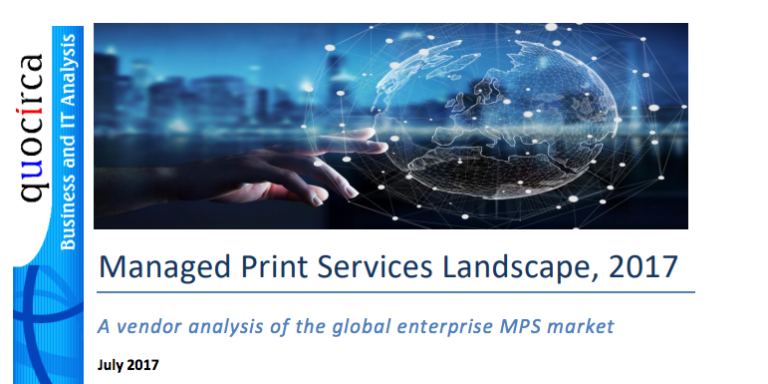Who cares about MPS infrastructure? Your end users probably don’t, as long as they can get their work done. Your finance people? They’re likely more interested in MPS cost and savings than in the technology behind it. IT teams? Yes, they definitely care. Security managers? For sure. Application architects? Likewise. They all care because it’s their job to worry about anything that touches the enterprise network, processes and systems.
The behind-the-scenes infrastructure is the part of the Managed Print Services experience that bumps up against your own systems, processes and technology. MPS infrastructure includes the portals, meters and other tools that keep an eye on all your fleet devices. It alerts the service team when something needs attention, tracks what happens and provides reports for comparison and insight. Vendors depend on all this technology plus automation to manage large, complex MPS engagements. Most of the time, this presence is transparent to end users, but it plays a big role in providing the seamless, invisible but ever-present service you expect.
From Device Management To Overall Fleet Management
MPS infrastructure isn’t about the devices, but the technology that delivers contracted services around the devices. InfoTrends identifies this service level as the middle tier in their three-level MPS model. It goes beyond break-fix and supplies into a “total print management approach.”
What technology must a vendor have to deliver this level of service? MPS infrastructure should be secure, integrated, reliable, trackable, easy to use, and provide plenty of visibility into your fleet of networked devices. Infrastructure components include:
- Device management tools – device-level technology
- Services management – the piece that enables remote monitoring and action
- User portal – the piece that visually connects enterprises and service teams with the fleet environment
Why You Should Care About Infrastructure
So while it’s not something you’ll pay much attention to day to day, when it comes time to sign an MPS contract, you’ll definitely want to know what MPS infrastructure is all about. MPS vendors are differentiated by the quality, reliability and scope of their delivery infrastructure. Read a few analyst reports, and you’ll soon see it’s an important measurement of a vendor’s capabilities. Understand what’s important, so when you renew a contract or investigate a new provider, you’ll know what to ask about their MPS infrastructure.
With that in mind, use these questions to start a dialog:
- How does the MPS provider deliver their services at an enterprise level?
- What types of technologies, processes and platforms are involved?
- Do their tools track, collect and report on networked device data?
- Can they integrate with your ERP, financial or other systems?
- Does the vendor invest in their technology, adapting and optimizing its suite of tools?
Next week’s blog will drill down into components and requirements of MPS infrastructure, including security, standards, hosting, reporting, viewing and integration. We’ll give you more smart questions to help you select the best MPS provider and infrastructure for your organization.



